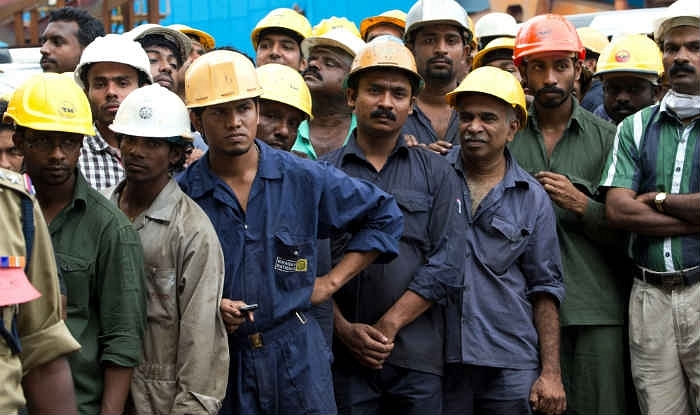Insta
UPSC Civil Services Exam: Economic Survey Summary - Minimum Wage For Inclusive Growth (Part X)

(representative image)
In part X of this series, we will discuss the last chapter of the Volume 1 of the Economic Survey 2019. The chapter talks about instituting a minimum wage system in India that promotes inclusive growth.
- Minimum wage laws are fragmented and complex, and leave out one in every three workers
- Low pay and wage inequality threaten the inclusive and sustainable growth of the country
- It is important to target the bottom rung of the wage earners. This will increase aggregate demand and build and strengthen the middle class, alleviate poverty and bridge gender gaps
- If set at an adequate level, minimum wages promote social justice without hampering employment
- Therefore, the Survey makes a case for rationalising and streamlining the policy for minimum wages
Impact of minimum wage laws
- Lighthouse effect: the minimum wage acts as a benchmark that pulls up wages in the low-paid and informal sector by enhancing the bargaining power of vulnerable workers.
- Wage laws have helped in reducing inequality, although impact is different among different sections. The inequality has increased amongst regular workers while it has decreased among casual workers, bottom and middle rung of workers across all categories. There is a catching up process.
- Research has shown either no impact or a positive impact of minimum wages over employment.
Challenges with current minimum wage system
- Lack of uniform criteria for fixing the minimum wage rate across and within states
- There are nearly 429 scheduled employments and 1,915 scheduled job categories for unskilled workers, therefore considerable variation and confusion
- Minimum Wages Act does not cover all wage workers. One in every three wage workers in India has fallen through the crack. For example, domestic help
- Different minimum wage rates across different states are justified citing different levels of development in the state. However, data shows that some of the more industrialised, developed states having of the lowest minimum wages in unskilled category. Example, Tamil Nadu
- Minimum Wages Act does not discriminate between men and women. But a persistent systemic bias is visible. For example, in unskilled category, women dominate domestic help sector, which has lower wage rate than, say, security guards,a sector dominated by men. More women receive wages lower than minimum wages than men
- Compliance and enforcement of labour laws is poor due to complexity and corruption
- Some states like Tamil Nadu, West Bengal, Tripura, Nagaland still have minimum wages below NFLMW (National Floor Level Minimum Wage) of Rs 176 per day
- The minimum wage has lesser impact on casual workers than regular workers
The Survey provides several suggestions to improve the minimum wage system in the country
- Simplification and rationalisation as proposed under Code of Wages Bill
- Central Government should notify a “national floor minimum wage” that can vary across the five geographical regions. States can notify their on minimum wage subject to this.
- Two factors- level of skill and geographical region can be considered for setting minimum wage to substantially reduce numbers of minimum wages in the country
- The government should cover all employments/ workers in all sectors, including both organised and unorganised sector.
- Minimum wages should be adjusted more frequently.
- Technology can be used to bridge information gap among workers. Information should be available in a simple and clear manner through a national level dashboard with access to state governments. This portal must be made available at Common Service Centres (CSCs), rural haats etc.
- Easy to remember toll-free number for anybody to register his grievance on non-payments of the statutory minimum wages and swift action against offenders.
This ends the chapter 11 of the Economic Survey. We have already covered up till chapter 7 in previous parts of this series. We shall continue with the remaining chapters in the next part.
Support Swarajya's 50 Ground Reports Project & Sponsor A Story
Every general election Swarajya does a 50 ground reports project.
Aimed only at serious readers and those who appreciate the nuances of political undercurrents, the project provides a sense of India's electoral landscape. As you know, these reports are produced after considerable investment of travel, time and effort on the ground.
This time too we've kicked off the project in style and have covered over 30 constituencies already. If you're someone who appreciates such work and have enjoyed our coverage please consider sponsoring a ground report for just Rs 2999 to Rs 19,999 - it goes a long way in helping us produce more quality reportage.
You can also back this project by becoming a subscriber for as little as Rs 999 - so do click on this links and choose a plan that suits you and back us.
Click below to contribute.
Latest